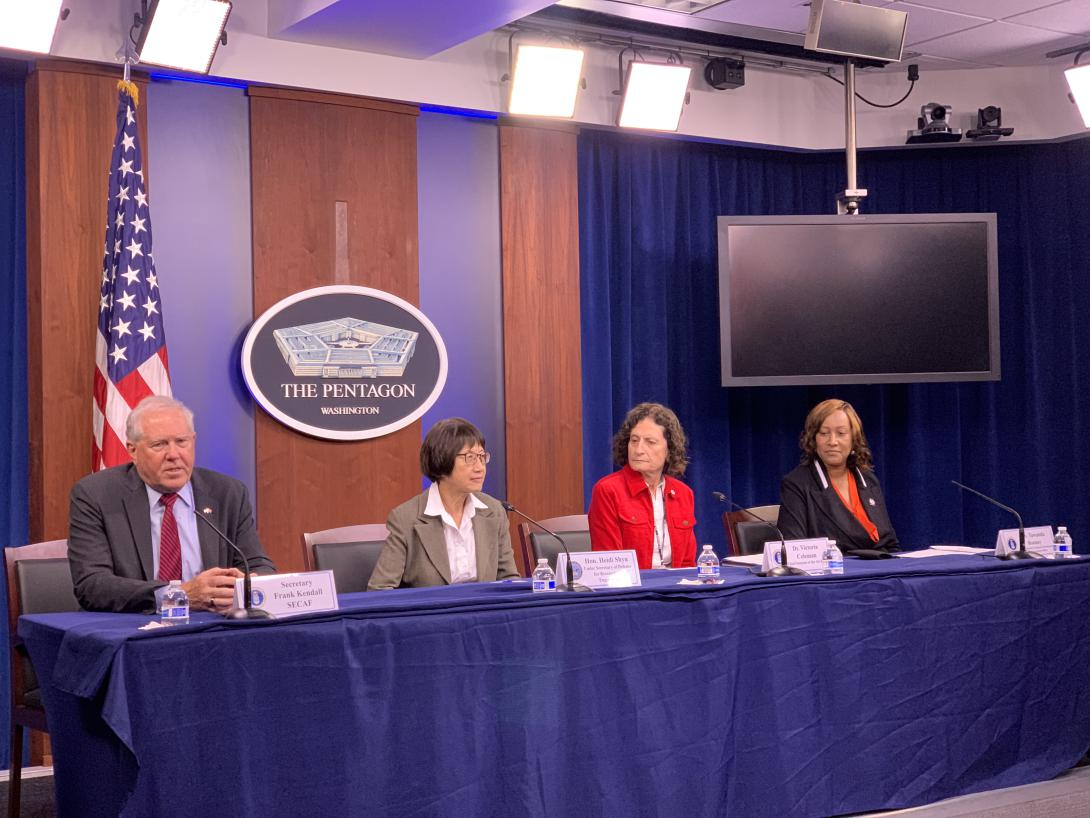Historic and Long-Overdue Diversity Push in R&D
“Today is a good day,” said Victoria Coleman, chief scientist of the United States Air Force, while announcing the launch of a new program by the Department of the Air Force (DAF), entitled Tactical Autonomy. The DAF is creating its first historically black colleges and universities (HBCU)-led university affiliated research center to harness research into autonomous systems by the HBCU scientific community. “This is a historic opportunity and one that is long overdue,” she said during a press conference at the Pentagon on June 27.
Secretary of the Air Force Frank Kendall emphasized the need for the program, calling attention to a “gap in our suite of research institutes right now that [the DAF] won’t have focused on [autonomy].” Kendall also pointed at China’s military modernization and their emphasis on artificial intelligence and autonomous systems and what it means for the United States and the “viability of our forces for the future.” Through past and present-day conflicts, autonomy is proving to be of key importance, which is why the DAF and Department of Defense (DoD) are investing $12 million per year for five years to fund research, faculty and students for the new program.
Heidi Shyu, the undersecretary of defense for Research and Engineering, who joined Secretary Kendall during the Pentagon briefing, exclaimed how delighted she is “that the Air Force is launching a new university affiliated research center (UARC) led by the HBCUs.” Currently, there are fourteen UARCs which, in collaboration with the DoD laboratories, program offices, industry and federally funded research and development centers, come up with innovative solutions to take on some of the nation’s toughest challenges. Shyu stressed the demand for a strong national STEM workforce. “One thing we ought to be doing is tap into and grow our STEM education through universities in the U.S.—U.S. citizens—rather than looking only externally for immigrants. One way to increase the number of STEM students is literally to cultivate the HBCUs. You have U.S. citizens, why not get them interested in STEM?”
“The HBCUs put out about 30% of the scientists and engineers that are produced [by the African American community],” Kendall stated. Of those, 88% earn PhDs from so-called R1, white majority schools; there is no ability to receive those PhDs from HBCU colleges due to historical inequities. “Our purpose here is to get access to that talent directly by going to the HBCUs versus waiting for that to migrate to us via an R1 majority institution,” Victoria Coleman added while answering a question from the press. The common difference between R1 and R2 universities is quite small, yet clearly impactful. According to Azusa Pacific University, R2 universities have “high research activity,” expecting professors to be teachers first and researchers second; R1 universities have “very high research activity,” expecting professors to be involved primarily in research. Both R1 and R2 universities must have at least 20 research/scholarship doctoral degrees and at least $5 million in total research expenditures.
Joining the announcement was Deputy Director Tawanda Rooney, Office of Concepts, Development and Management in the Department of the Air Force, and an HBCU alumni from Virginia State University. Rooney highlighted the key goal of this program: fix the inequities. For the creation of the newest UARC, the Air Force and the DoD are reaching out to the HBCUs with qualifying research schools in request for their competition to become the lead school. And while UARCs have historically been available to the HBCUs, those colleges have not been able to compete. “One of the things we’re talking about is building that capacity … eleven of the [HBCUs] are R2s; none of them are R1s,” she said, pointing out that R2s are therefore unable to compete with R1s. “One of the things under the National Defense Authorization Act is to fix the inequities, and to do that, we have to give them that lift.” It is important to note that to be competitive, there must be access to labs and reduced teaching loads.
DoD’s Deputy Chief Technology Officer for Critical Technologies Maynard Holliday chimed in, “I’m one generation removed from HBCUs. My parents were both HBCU grads. For me to achieve my career goals, that was not an option for me. I have an elite pedigree, but I want the next me to be able to come from an HBCU.”
The cultivation of a highly diverse workforce is the only way to accomplish a strong and successful strategy for national security, which is why Shyu also referred to the DoD’s various scholarship programs reaching as far as junior high school students to grow STEM talent from an early stage. “It’s the diversity of ideas and perspective that helps you solve the most challenging problems from innovative ideas. That’s why diversity is important and that’s why it enriches this country. This country is incredible in terms of the diversity of talent in this nation—we’re one of the most innovative countries in this world because of diversity.”
“The United States have a long history and reputation of being a haven for diversity and innovation,” Shyu continued. “We must tap into the HBCUs to grow a well-educated and well-trained workforce for the DoD and this nation.”
“Today is a really good day,” Coleman concluded.







Comments